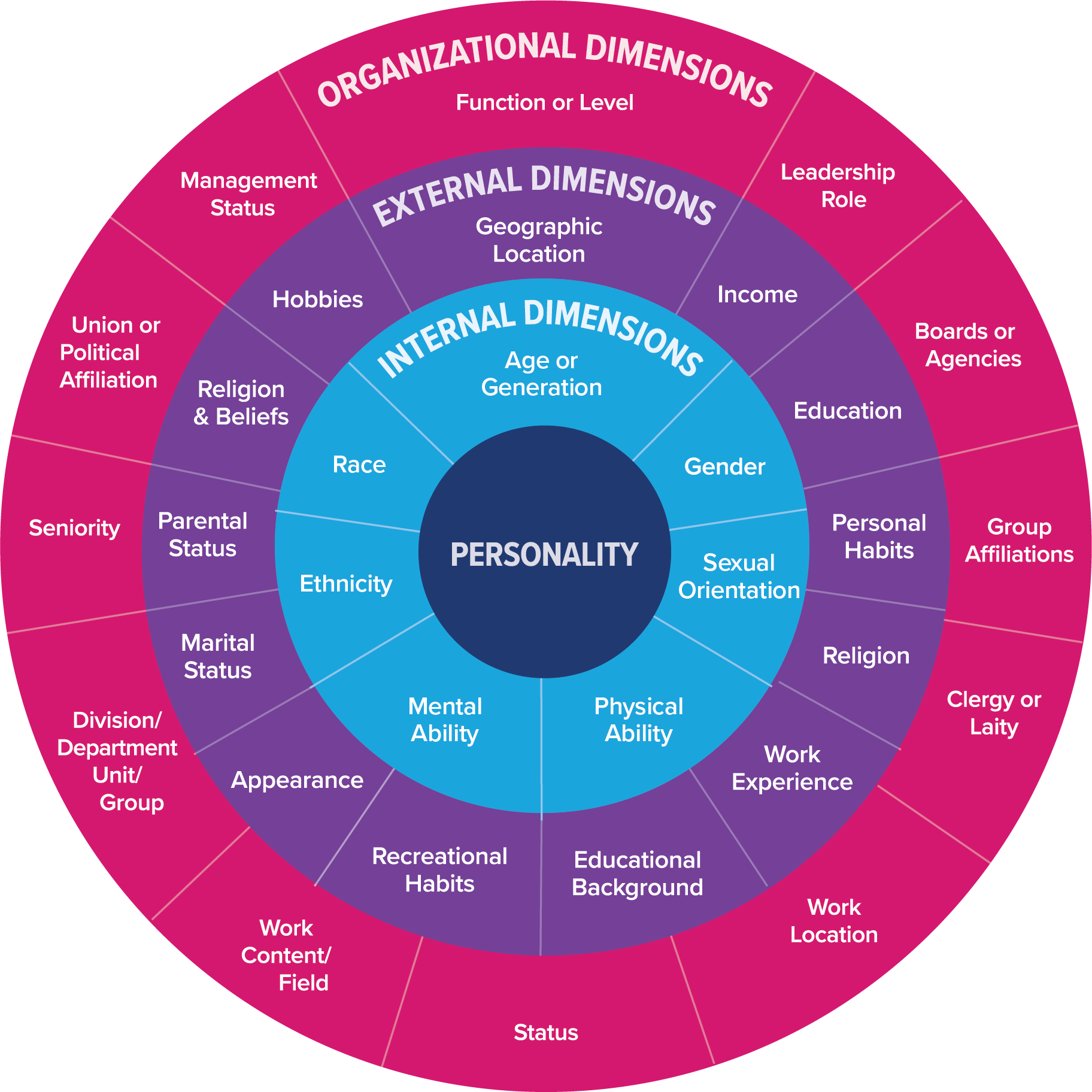As organizations embark on their journey to create more diverse, inclusive, and equitable workplaces the thought alone can be overwhelming. What if we say the wrong thing? What if we don’t reach our goals? What if we are criticized for not making enough progress fast enough? These are very real concerns. However, before engaging in this work I encourage employers to do three things: reflect, do your research, and determine your “why”.
Reflect
Each person represents various dimensions of diversity on an internal, external, and organizational level. Self-reflection is required to understand your own privilege, cultural influences, identities, and the intersectionality of those identities. All of which have shaped your personal values and beliefs and result in bias. Understanding bias and actively using strategies to mitigate them is important for inclusion, but remember that organizational processes and culture are driven by individuals. It’s critical to first identify and understand bias on an individual level, through self-reflection, before you can begin to understand how it manifests within your organization. Leaders in the diversity, equity, and inclusion (DE&I) space are open-minded and understand that all the answers do not come from a singular view. DE&I topics must also be approached with a growth mindset and belief your abilities can be developed through dedication and hard work.

Do your research
No one person is a subject matter expert on all things DE&I. Continuous education is needed to create a solid foundation, stay current, and be viewed as a credible leader. Initial research should include determining the current climate for DE&I within your organization and the community served. DE&I is an evolving field, and the lingo is constantly changing. Seek to understand the meaning behind various related terms and use a standard set of definitions within your organization. Researching standards and best practices supports building your foundational knowledgebase but will also be helpful for future planning and implementation. It’s also important to identify what others in your industry are currently doing.
Determine your “why”
Determining your “why” is critical on a personal and organization level. Here are some vital questions to consider. Why is DE&I important to you as a leader? Why are you prioritizing it now? What is your intrinsic motivation? Were you inspired by racial injustice, shifting demographics, missed opportunities due to the buying power of different groups, or because being inclusive is the right thing to do? Can you tie DE&I to the vision, mission, and goals of your organization? What might you gain or lose from engaging in this work? What is your scope? What do you hope to accomplish? What impact do you desire to have in this space? Who are you focusing your efforts on? What is the return on investment from a talent perspective? Determining your why will set the direction for your efforts. It can help inform strategic planning, as well as policy and program creation.
These three steps of reflecting, researching, and determining your why were intended to be a starting point, not an all-exhaustive list. Please utilize the additional resources for research to create or strengthen your DE&I efforts.
Additional resources
- Learn more by downloading a free electronic copy of the guidebook: Five Essential Leadership Competencies of an Effective D&I Practitioner. Hard copies can also be purchased on Amazon.
- Watch the webinars that dive deeper into leadership competencies detailed in the guidebook on this YouTube channel.
- Explore PIVOT, a collection of D&I leading practices for both informational and implementation purposes for companies across all industry sectors and sizes.
Connect with me on LinkedIn.
{{cta(‘be643ac7-73e2-40f6-a7b2-7c5927924bf4′,’justifycenter’)}}


